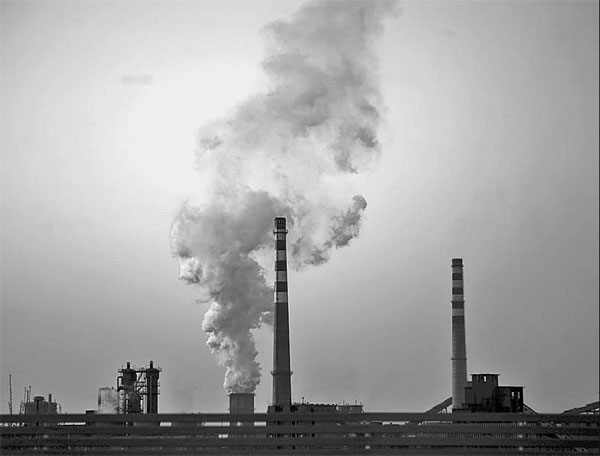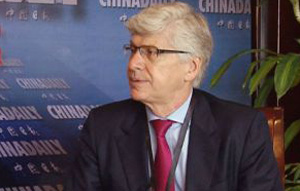Future points to carbon trading
Updated: 2013-06-14 07:40
By Lan Lan (China Daily)
|
||||||||
|
Smoke billows from a factory in Dezhou, Shandong province. To reach mandatory efficiency goals, the government had to take some extreme steps, including power cuts and limits on electricity supply in 2010. Provided to China Daily |
As the world's largest energy consumer, China is stepping up its efforts to cut greenhouse gas emissions by rolling out a series of experimental pilot programs, reports Lan Lan.
Chinese companies that have long faced relatively low environmental costs will have to figure out efficient ways to cut carbon dioxide emissions as a market mechanism is right around the corner.
The country's first pilot carbon-trading program for cutting greenhouse gas emissions will make its formal debut on Tuesday in Shenzhen, the southern city in Guangdong province that has long been a leader in China's reforms.
The Shenzhen pilot program is expected to hasten the launch of pilots in other regions. The central government has designated four other cities, including Beijing and Shanghai, and two provinces to roll out pilot carbon-trading programs by 2014.
In Shenzhen, about 635 companies accounted for about 38 percent of the city's total emissions, and they will be included in the experimental program.
Using a 2012 baseline of carbon dioxide emissions of roughly 31.73 million tons, Shenzhen will issue 100 million tons of free emissions allowances to companies complying with the program between 2013 and 2015.
Rather than copy cap-and-trade programs in Europe or California, the Shenzhen pilot sets limits on carbon intensity (carbon dioxide emissions per unit of GDP) for emitters.
The 635 companies must achieve an average annual carbon intensity reduction of 6.68 percent by 2015.
However, regions will explore various approaches in establishing their own experimental programs. Cities such as Beijing might adopt absolute emission caps, said industrial experts.
Carbon intensity
"Adopting a carbon intensity index is in line with China's commitment of reducing carbon intensity," said Yang Fuqiang, senior adviser on energy, environment and climate change for the Natural Resources Defense Council in Beijing.
China has set a target of reducing carbon intensity by 40 to 45 percent by 2020, compared with the 2005 levels.
Carbon intensity reduction leaves room for growth by allowing a limited increase of carbon emissions, said Yang.
"All approaches could be used, but the final target is to have a nationwide market, and some kind of top-level programs should be put in place," said Yang.
Most international carbon markets adopt absolute caps, but it still remains uncertain when China will reach an absolute peak in emissions.
Before the two-week climate change talks in Bonn in early June, the peak issue was already in the limelight. Some media reports said China's greenhouse gas emissions might peak before 2025 and the country might introduce a cap in 2016.
Reports about an early cap were dismissed by Su Wei, China's chief climate negotiator in Bonn, while he reaffirmed China's commitment to a carbon-intensity target by 2020.
The peak issue is part of the agenda for China in its sustainable development, but when it will happen requires more in-depth analysis, said Zhou Dadi, vice-chairman of the National Energy Advisory Committee.
Various studies have yielded wide variations for China's carbon emissions peak, ranging from 2025 to 2040.
"The year of 2025, or the period between 2025 and 2030, each has a high probability, but a precondition is China's energy demand for industrialization, which could peak by 2020, and the country could then enter a post-industrial era," said Yang.
Another key factor is the speed of China's urbanization. The quicker the process is, the earlier the country's emissions peak will come, Yang said.
Many Shenzhen businesses are willing to experiment with the new mechanism since it could also generate new business opportunities, though some power plants may be reluctant to adopt the new system, said experts who were involved in the design of the program.
The cost of environmental degradation has been largely ignored during China's impressive economic development in recent decades, putting mounting pressure on the government.
Environmental costs
To reach China's mandatory efficiency goals, the government had to take some extreme steps, including power cuts and limits on electricity supply in 2010.
"A market-based mechanism will surely work better than administrative measures. Companies should internalize environmental costs that were previously taken by the government," said Tang Renhu, general manager of Beijing-based Sino-Carbon Innovation and Investment Co.
To avoid a low price in carbon auctions, regulators in some markets may set a floor price. Prices that are too low reduce companies' incentive to invest in technology to cut down emissions.
But according to experts, the Shenzhen pilot program has yet to set either a floor or a ceiling on carbon prices for auction.
For energy-conservation projects, the central government offers a subsidy of 240 yuan ($39) for each ton of coal equivalent saved, while provincial-level governments offer about 60 yuan. Based on that, the reference carbon price is about 100 yuan per ton, said Tang.
This number "could be a reference to the market, but the price needs to be decided by the market," he said.
California established its carbon market last November with quarterly auctions of carbon allowances, making it the second-largest carbon market in the world after the EU's Emission Trading Scheme or ETS.
California set a $10 price floor for its first allowance auction in November. The carbon allowances were actually sold at $10.09 a ton.
In its second auction in February, the price rose to $13.62 a ton, and the price then hit a record of $14 in the third auction in May.
Gary Gero, president of the California-based Climate Action Reserve, said the most affected companies are electric utilities, petroleum refineries and large manufacturing facilities.
Most companies will assess the costs of implementing on-site emission reductions relative to the cost of an allowance or offset and then pursue the most cost-effective reduction opportunities.
"This is the very point of a cap-and-trade program; it provides the largest amount of emission reductions at the least possible cost, thereby reducing the economic impact on businesses and consumers," said Gero.
This program will result in the shifting of energy production to cleaner fuels and technologies as the program progresses and after the least expensive reductions have been identified and implemented, he added.
The problems of the EU's ETS, the largest player in the global carbon market, are mostly due to two related issues: the excessive allocation of permits and carbon price volatility.
Justin Dargin, energy and carbon markets expert at the University of Oxford, said China should not be overly concerned about the success or failure of carbon markets outside its jurisdiction.
The reason that China is concerned about the development of carbon markets has mostly to do with transitioning its economy away from an energy-intensive model.
The introduction of energy-efficient industrial equipment would also lower China's aggregate energy consumption. That would help China meet its energy security goals for the medium and longer term. These goals are relatively independent of developments outside of China, said Dargin.
Yet, China can learn from other jurisdictions and therefore should pay close attention to the best practices and "lessons learned" elsewhere.
Dargin suggested setting a carbon price floor that is high enough to create incentives for industry to invest in clean technology, while at the same time not being too high to hinder industrial competitiveness. The price band should also attempt to minimize volatility as much as possible.
Xie Zhenhua, China's top climate change official, said in April that China will draw lessons from the EU's ETS, the world's biggest emissions trading system, which has had a lingering oversupply of carbon allowances and low prices.
Challenges ahead
Setting standards and building the capacity of China's carbon market takes time, but the biggest hurdle might be China's sluggish energy pricing system reform.
Whether electricity rates are determined by the market will be a core concern of building a carbon market, said Dargin.
"Without a market-determined price, the imposition of a carbon price on power producers would have little impact as power producers are not allowed to pass on costs to end-users and resist absorbing these costs themselves," he said.
Carbon is a product that is closely linked to energy, but China's energy prices are still mainly controlled by the government. But this year the government has showed signs of accelerating its energy price reforms.
The National Development and Reform Commission in March launched a more market-oriented fuel pricing system to better reflect costs. Economists said relatively low inflation levels have provided favorable conditions for energy pricing reform.
The healthy development of the carbon market will eventually rely on reform of the energy pricing system, said Tang.
"It's difficult to (do things that) affect vested interests among energy groups, so starting the carbon market could be a force to help accelerate reform in the energy sector, but that also brings major challenges for China's carbon market," said Tang.
Also, integration among different markets will be a challenge, he said.
Local pilot projects may have some limitations such as small trading pools for suppliers and buyers, so the central government should allow them to extend trading with other regions, said experts.
Also, potential fraud must be monitored by regulators to ensure that the market has adequate oversight and transparency. As carbon exchanges open in various cities, information security must be monitored and made robust, said Dargin.
For instance, regulators shut down the EU's ETS after hackers stole more than 3 million carbon credits from government and private company accounts.
Furthermore, penalties for non-compliance must be clear. What are the penalties if emitters exceed their emissions caps and do not pay the levied fines? This needs to be clearly stated, said Dargin.
Contact the writer at lanlan@chinadaily.com.cn
(China Daily USA 06/14/2013 page17)

 Philippine, US start Naval exercise in S China Sea
Philippine, US start Naval exercise in S China Sea
 Supreme Court gay rights ruling celebrated across US
Supreme Court gay rights ruling celebrated across US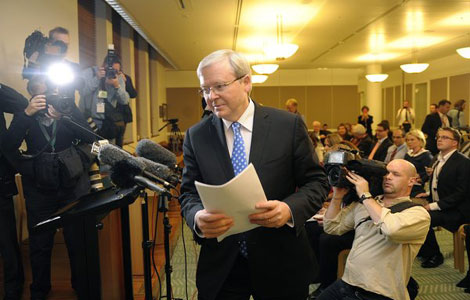
 Rudd returns as Australian PM after Gillard
Rudd returns as Australian PM after Gillard
 Brazil protests intensify before Confed Cup semifinal
Brazil protests intensify before Confed Cup semifinal
 Long lost weekend
Long lost weekend
 Park ready to charm China
Park ready to charm China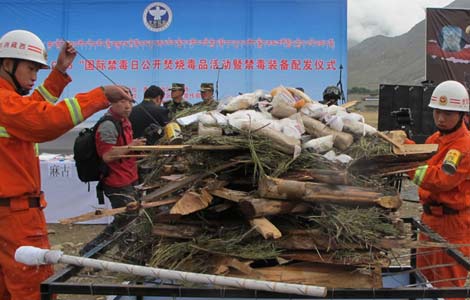
 Prices climb as police crack down
Prices climb as police crack down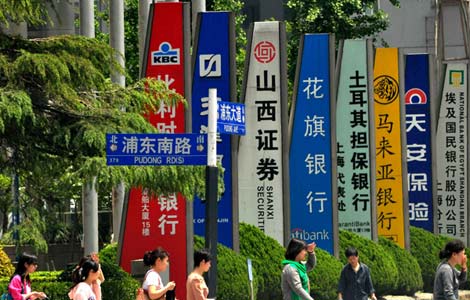
 China 'most promising' in FDI
China 'most promising' in FDI
Most Viewed
Editor's Picks

|

|

|

|
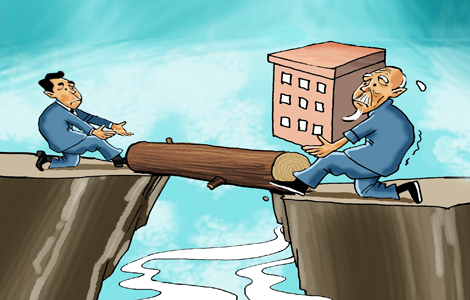
|

|
Today's Top News
Proposed law puts curbs on family visas
Markets will stay volatile, continue to struggle: Expert
Promising outlook on US, China investment
US adoptees visit Chinese roots
Ecuador refutes Washington Post accusation
IBM to make Chinese job cuts
PBOC ends credit crunch, to go further
Snowden still at Moscow's airport, asylum pending
US Weekly

|

|
